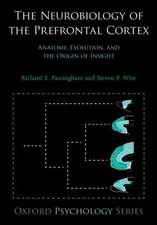Combating Desertification in Asia, Africa and the Middle East: Proven practices
Editat de G. Ali Heshmati, Victor R. Squiresen Limba Engleză Paperback – 6 aug 2015
This compilation demonstrates that desertification and land degradation can be controlled and reversed with existing techniques in such widely varying environments as the Sahel of Africa to Sri Lanka and the Philippines in SE Asia, from mountains in Lesotho to low lands on desert margins in Mongolia. Proven approaches include technical interventions, changes in governance and to the legislative framework and policy reform. The book fills a gap in the desertification-related literature in that it shows what to do in situations ranging from fixing mobile sands to arresting accelerated soil erosion in sloping lands.
| Toate formatele și edițiile | Preț | Express |
|---|---|---|
| Paperback (1) | 1221.65 lei 6-8 săpt. | |
| SPRINGER NETHERLANDS – 6 aug 2015 | 1221.65 lei 6-8 săpt. | |
| Hardback (1) | 1240.93 lei 6-8 săpt. | |
| SPRINGER NETHERLANDS – 11 iul 2013 | 1240.93 lei 6-8 săpt. |
Preț: 1221.65 lei
Preț vechi: 1489.82 lei
-18% Nou
Puncte Express: 1832
Preț estimativ în valută:
233.76€ • 244.72$ • 193.42£
233.76€ • 244.72$ • 193.42£
Carte tipărită la comandă
Livrare economică 05-19 aprilie
Preluare comenzi: 021 569.72.76
Specificații
ISBN-13: 9789401780926
ISBN-10: 9401780927
Pagini: 476
Ilustrații: XXXV, 476 p. 169 illus., 125 illus. in color.
Dimensiuni: 155 x 235 x 26 mm
Greutate: 0.71 kg
Ediția:Softcover reprint of the original 1st ed. 2013
Editura: SPRINGER NETHERLANDS
Colecția Springer
Locul publicării:Dordrecht, Netherlands
ISBN-10: 9401780927
Pagini: 476
Ilustrații: XXXV, 476 p. 169 illus., 125 illus. in color.
Dimensiuni: 155 x 235 x 26 mm
Greutate: 0.71 kg
Ediția:Softcover reprint of the original 1st ed. 2013
Editura: SPRINGER NETHERLANDS
Colecția Springer
Locul publicării:Dordrecht, Netherlands
Cuprins
Editors Preface.- Foreword.- Chapter 1 Introduction to Deserts and Desertified regions in China.- Chapter 2 Controlling Sand Movement through Mechanical Measures: China's Experience.- Chapter 3 Successful Biological methods for combating desertification at degraded areas of China.- Chapter 4 Libya: Reversal of land degradation and desertification through better land management.- Chapter 5 Desertification and its control in Morocco.- Chapter 6 Egypt: Land degradation issues with special reference to the impact of Climate Change.- Chapter7 Combating Desertification in Kenya.- Chapter 8 Lesotho: desertification control program.- Chapter 9 Desert Environments of Republic of Chad.- Chapter 10 Desertification Control in Niger: The medium Term Action Plan 2006-2011.- Chapter 11 Mongolia: Country Features, the Main Causes of Desertification and Remediation Efforts.- Chapter 12 Arid Land Development and Combating Desertification in Pakistan.- Chapter 13 Uzbekistan: Rehabilitation of Desert Rangelands affected by Salinity, to Improve Food Security, Combat Desertification and maintain the Natural Resource Base.- Chapter 14 Review of efforts to Combat Desertification and arrest and reverse land degradation in Myanmar.- Chapter15 The Philippines Action Plan to Combat Desertification, Land Degradation, Drought and Poverty/a.- Chapter 16 Managing Arid Areas and Sand Dunes in Sri Lanka.- Chapter 17 Indigenous plant species from the drylands of Iran, distribution and potential for habitat maintenance and repair.- Chapter 18 Soil and Water Conservation for Desertification control in Iran.- Chapter 19 Land Degradation in The Sultanate of Oman: Reasons and Interventions Measures.- Chapter 20 Desert Development: how does it relate to anti desertification measures?.- Chapter 21 Replication and scaling up: where to from here?.- Appendix List of the full botanical names of plants with authorities.- Index.
Notă biografică
This book is about the ‘how’ of desertification control as opposed to an analysis of the ‘why’ and fills a gap in the desertification-related literature in that it shows what to do in situations ranging from fixing mobile sands to arresting accelerated soil erosion in sloping lands. There are numerous illustrations to show the successful techniques.
This compilation demonstrates that desertification and land degradation can be controlled and reversed with existing techniques in such widely varying environments as the Sahel of Africa to Sri Lanka and the Philippines in SE Asia, from mountains in Lesotho to low lands on desert margins in Mongolia. Proven approaches include technical interventions, changes in governance and to the legislative framework and policy reform. The book fills a gap in the desertification-related literature in that it shows what to do in situations ranging from fixing mobile sands to arresting accelerated soil erosion in sloping lands.
This compilation demonstrates that desertification and land degradation can be controlled and reversed with existing techniques in such widely varying environments as the Sahel of Africa to Sri Lanka and the Philippines in SE Asia, from mountains in Lesotho to low lands on desert margins in Mongolia. Proven approaches include technical interventions, changes in governance and to the legislative framework and policy reform. The book fills a gap in the desertification-related literature in that it shows what to do in situations ranging from fixing mobile sands to arresting accelerated soil erosion in sloping lands.
Textul de pe ultima copertă
This book of 21 chapters is about the ‘how’ of desertification control as opposed to an analysis of the ‘why’ and fills a gap in the desertification-related literature in that it shows what to do in situations ranging from fixing mobile sands to arresting accelerated soil erosion in sloping lands. More than 40 years of work by the Chinese in sandy land reclamation has led to the development of effective techniques. There are numerous illustrations (many in color) to show the successful techniques. This compilation demonstrates that desertification and land degradation can be controlled and reversed with existing techniques in such widely varying environments as the Sahel of Africa to Sri Lanka and the Philippines in SE Asia, from high elevation in Lesotho to low lands on desert margins in Mongolia. Proven approaches include technical interventions, changes in governance and to the legislative framework and policy reform. The contributors are local experts working in-country and bring to the book insights into many little-known aspects of the technical, ecological, social, cultural and economic factors determine success or failure of desertification control efforts.
This book will be of great value to professionals from the donor community (World Bank, Asian Development Bank, Islamic Development Bank, UN agencies and NGOs) to graduate student students and land managers tasked with responsibility to arrest and reverse desertification and land degradation.
This book will be of great value to professionals from the donor community (World Bank, Asian Development Bank, Islamic Development Bank, UN agencies and NGOs) to graduate student students and land managers tasked with responsibility to arrest and reverse desertification and land degradation.
Caracteristici
Includes supplementary material: sn.pub/extras














